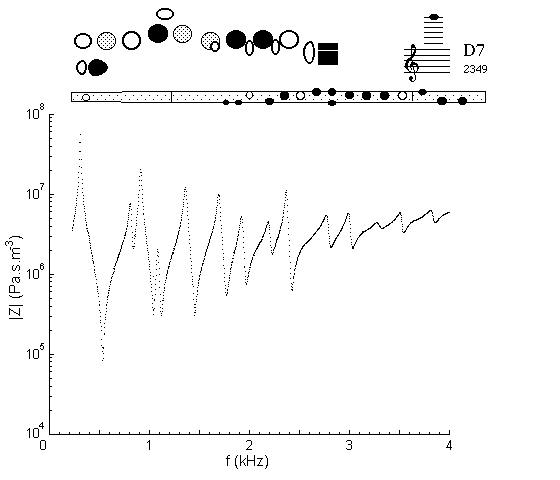| Acoustics of baroque, classical and modern flutes |
modern flute
|
D7 |

|
Fingering Acoustic schematic Non-specialist introduction
to acoustic impedance |
Notes in the fourth octave are well above the cut-off frequency for the flute, so virtually the whole of the bore is involved in the standing wave. It is therefore inappropriate to give qualitative explanations of the impedance spectra in terms of simpler fingerings. Rather, any open holes are acting as register holes, and their exact placement affects the intonation and depth of the working minima.
Notice that all have some deep minima at low frequencies: these cause little inconvenience because the jet is fast for playing altissimo notes. The principal requirement for fourth octave fingerings is to have a minimum whose frequency is approximately correct, whose depth is as great as one can find, but not to have any other substantial minima at nearby frequencies.
| Acoustic measurements are available for these flutes - modern B, modern C, classical C, classical D, classical flared, baroque Sound clips are available for modern B, classical flared and baroque |
To compare flutes, it is easiest to open a separate browser window for each instrument. |